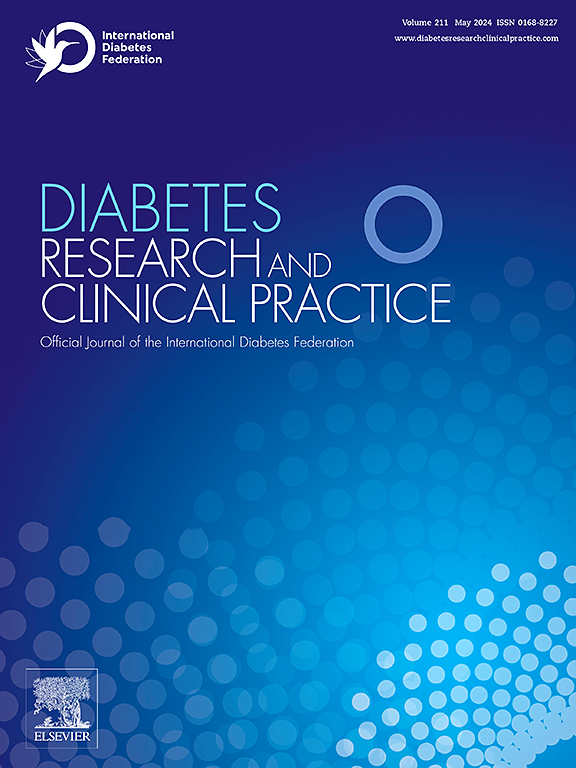新诊断为 2 型糖尿病的年轻和中老年人的睡眠障碍:一项对超过 100 万人进行的回顾性队列研究。
IF 6.1
3区 医学
Q1 ENDOCRINOLOGY & METABOLISM
引用次数: 0
摘要
目的:探讨患有或未患有新诊断的2型糖尿病的年轻(16-≤40岁)和中老年(=>40岁)成年人睡眠障碍的5年发病率和相对发生率:这项回顾性、观察性队列研究利用了 TriNetX 数据库中美国协作网络的数据。我们比较了年轻人群(n = 110,088 人)和中老年人群(n = 1,185,961 人)睡眠障碍的 5 年累积发病率:结果:2型糖尿病患者与非2型糖尿病患者发生任何类型睡眠障碍的绝对风险都更高。在为期5年的随访期间,在新确诊的2型糖尿病患者中,有14.2%的年轻人和18.5%的中老年人患上了各种类型的睡眠障碍,而在倾向匹配的非糖尿病患者中,这一比例分别为4.5%和7.9%。我们观察到,年轻成年人患睡眠障碍的相对比例更高:结论:与未患糖尿病的人群相比,新确诊的 2 型糖尿病患者 5 年内患睡眠障碍的风险更高。中老年人的绝对风险较高,但年轻的 2 型糖尿病患者的相对风险一直较高。作为糖尿病整体护理方法的一部分,应定期讨论睡眠问题,尤其是年龄≤40岁的人群。本文章由计算机程序翻译,如有差异,请以英文原文为准。
Sleep disorders in younger and middle-older age adults with newly diagnosed type 2 diabetes mellitus: A retrospective cohort study in >1million individuals
Aims
To explore the 5-year incidence and relative rates of sleep disorders in younger (16-≤40 years) and middle-older (=>40 years) age adults with and without newly diagnosed type 2 diabetes.
Methods
This retrospective, observational cohort study utilised data from the US Collaborative Network within the TriNetX database. We compared 5-year cumulative incidence of sleep disorders in younger (n = 110,088) and middle-older populations (n = 1,185,961).
Results
The absolute risk of developing any type of sleep disorder was greater in individuals with type 2 diabetes vs. those without. Over the 5-year follow-up period, 14.2 % of younger adults and 18.5 % of middle-older age adults with newly diagnosed type 2 diabetes developed any form of sleep disorder, compared to 4.5 % and 7.9 % propensity matched individuals without diabetes. We observed a more pronounced relative rate across the observed sleep disorders in younger adults.
Conclusions
The 5-year risk of sleep disorders is higher in those with newly diagnosed type 2 diabetes vs. those without. A higher absolute risk was seen in middle-older adults, but relative rates were consistently higher in younger adults with type 2 diabetes. Sleep should be regularly discussed as part of a holistic approach to diabetes care, particularly in those aged ≤40.
求助全文
通过发布文献求助,成功后即可免费获取论文全文。
去求助
来源期刊

Diabetes research and clinical practice
医学-内分泌学与代谢
CiteScore
10.30
自引率
3.90%
发文量
862
审稿时长
32 days
期刊介绍:
Diabetes Research and Clinical Practice is an international journal for health-care providers and clinically oriented researchers that publishes high-quality original research articles and expert reviews in diabetes and related areas. The role of the journal is to provide a venue for dissemination of knowledge and discussion of topics related to diabetes clinical research and patient care. Topics of focus include translational science, genetics, immunology, nutrition, psychosocial research, epidemiology, prevention, socio-economic research, complications, new treatments, technologies and therapy.
 求助内容:
求助内容: 应助结果提醒方式:
应助结果提醒方式:


